As I was researching and writing about Gumshoe’s other setting books like The Esoterrorists, Night’s Black Agents, and Trail of Cthulhu, I saw they have a new book coming out: Swords of the Serpentine. It’s not officially released yet, but I pre-ordered. They recently sent out a pre-release PDF of the rules to those who pre-ordered. So I’ve read through it and here is what you need to know about it.
Swords of the Serpentine is a pulp-action Swords and Sorcery setting. It adapts the modernist Gumshoe Investigative system, for a fantasy world evocative of Ffahrd or Conan, not Tolkien or the Forgotten Realms. While keeping Gumshoe’s core systems, it adds several new systems evoking its setting.
Swords of the Serpentine (SotS) is set in the City-State of Eversink. Built on a river delta (e.g. swamp) over 1,000 years ago, the city is literally sinking into the wet, swampy soil. They buildings sink, on average, about 8 centimetres a year, meaning the first floor becomes the basement after fifty years. The other defining feature of Eversink is its canals. Think of Venice at its Renaissance heights.

The official Goddess of Eversink is Denari. Her priests and priestess teach the city is literally her body. She is the patron of commerce and civilization. Taxes are simple tithes to the church. The church teaches the founders of Eversink entered into a 1,000-year contract with Denari. She would keep the city safe and maximize the merchant’s profit, so long as its citizens pay their taxes . . . erm . . . tithes.
Every coin exchanged is a prayer, and every transaction a sacrament.
Swords of the Serpentine, Chapter Nine: The City of Eversink
Within the City are several different factions. Players can be allies or enemies of these factions. Allies can be called upon to help your investigation. Enemies can throw problems that make your investigation harder. Even without being a full ally or enemy, your actions in the city can help or spoil the plans of various factions. This will build Favor or Grudges that you can spend for smaller boons and burdens.
The City’s Factions are:
| Faction Name | Description |
| Ancient Nobility | The original aristocratic families of Eversink; their influence is waning, as the Mercanti gain in wealth. |
| Church of Denari | With an organized hierarchy and official status, the Church is a vital part of society within Eversink. |
| City Watch | The Watch is low on the totem pole of status within Eversink. This means that it is often under staffed and under funded, but they do their best not to be corrupted. |
| Commoners | These are the poor, disenfranchised laborers and craftspeople of the city. They are truly at the bottom of Eversink’s hierarchy and they know it. |
| Guild of Architects and Canal-Watchers | Eversink’s most powerful mercantile guild that has developed secret rituals evocative of the Masons. Their power and influence arises from the fact the city is sinking and canals are essential mode of travel within the city. |
| Mercanti | The merchants guild organized around the leading merchant families. Along with the Church, they spread Denari’s worship far and wide. |
| Mercenaries | Eversink has no standing army, except for the Church Militant. But who needs to conscript soldiers when you can just hire them? |
| Monstrosities | With an eon’s worth of underground structures, there are many places for the monstrous folk of this realm to hide and live. They may help you hide and teach you their inhuman forbidden lore. |
| Outlanders | Barbarians, folks who did not come from Eversink, they do not know how the City operates. But their lack of knowledge of the proprieties of the City may make them a good source of information and help. |
| Sorcerous Cabals | The use of Sorcery and the Corruption it always causes is illegal in Eversink. But since when has that stopped those searching for knowledge and power? What is better (worse) than a lone, corrupted sorcery? An entire cabal of them. |
| Thieves’ Guilds | With this much commerce, there must also be criminal elements within the city. These guilds typically do not ally with each other, but have rough agreements not to directly compete. |
| Triskadane | The Thirteen who control Eversink. Their identities are secret. But the government is not faceless as they have an established bureaucracy keeping the gears turning. |
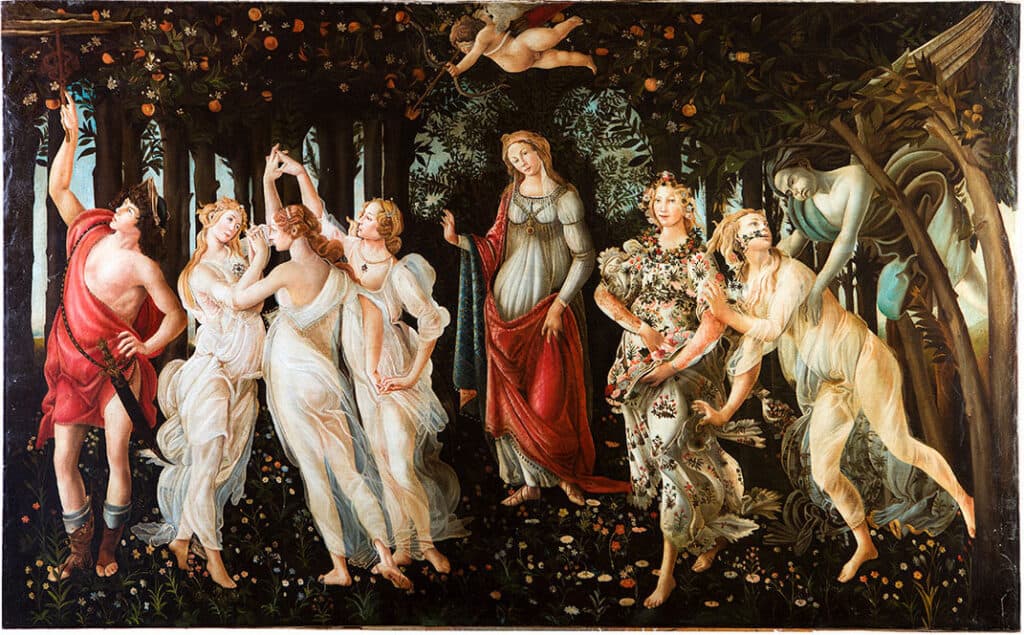
Character Creation
If you want a detailed explanation and analysis Gumshoe’s character creation process over four of its setting books, then you’re in luck! SotS further evolves Gumshoe character creation:
- Choose a Profession
- Write down a few Adjectives describing your Hero and their three favorite things in life.
- Assign Investigative Build Points
- Assign 2 ranks to Allies and 1 rank to an Enemy.
- Assign General Build Points
- Assign Health and Morale Points
- If taking ranks in Corruption, pick a Sorcerous Sphere per rank and decide if your sorcery targets Health or Morale.
- Write down at least 5 minor, iconic gear that defines who you are.
- Take 1 rank of Grit (it reduces Morale damage).
- Name your Hero.
Professions
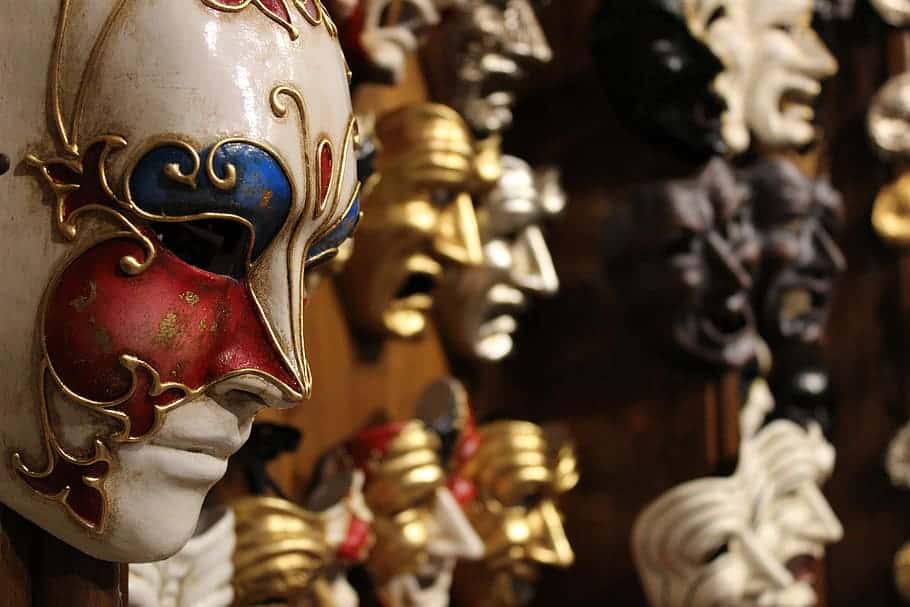
There are four Professions in SotS. Like in Night’s Black Agents, professions are a bundle of specific Investigative and General Ability scores. However, unlike NBA, picking a profession does not automatically spend ranks in any of those Abilities. But as will be covered more below, if you specialize in only your profession’s Abilities, you get bonus build points. In reality, you’ll likely find yourself mixing and matching to create your Hero.
The four Professions are:
- Sentinel — Church Inquisitor, City Watch, Agent of the Triskadane’s Secret Police, Scout for a guild of Smugglers, or the Mercanti’s Inspector (Enforcer). Sentinel’s have a keen eye for illegal activity, are masters of the city’s bureaucracy, and know when something is out of the ordinary. Some Sentinel’s can even see into the spirit realm.
- Sorcerer — Sage of rare lore, mystical healer (or poisoner), prophet, and Corrupter. Tapping the full power of your Sorcery can be dangerous for you or your allies or both. It is definitely illegal to spread Corruption and there is no way to access your full powers without Corruption. Where did you get your power: ancient writings, handling an idol of the long-dead snake people, or possession by a demon or other forbidden, minor god?
- Thief — You trade in secrets as well as stolen goods. You can overcome foes with your blade, your words, or your mind. You know every good place to hide, every shortcut, and the best Fences in Eversink.
- Warrior — A Mercenary or Man-at-Arms, you know how to survive and persevere in a fight. You also know how to get around outside of the City and hunt for Trophy Monsters.
Pick a Profession based upon how, at a high level, your character views the world and is viewed by the world. Do not worry over-much about the profession-specific skills. Besides running out of skill points, there is no limitation to what skills you can pick.
What about Clerics?
An argument could be made the Sentinel is the “cleric” Profession, with their Spirit Sight ability. However, Swords of the Serpentine is pretty explicit: there is no cleric class per se. Instead, its all about flavor (or as its called in the Savage World system (read more here): Trappings).

There are gods and goddesses in this world. They are real and give power. The Investigative Ability Prophecy (Sorcery) is almost explicitly divine (e.g. divination) in its origin. Another one is Ridiculous Luck (Thief). While it could be coincidence, a person of faith calls it divine intervention.
Then there is Spirit Sight (Sentinel), which allows you to see ghosts and sense corruption. It also helps remove corruption. While that ability is definitely occult, you can flavor it as coming from a higher or lower power. The only profession that doesn’t have an “obvious” divine Investigative Ability on its profession list are Warriors.
But this is where the flavor or trappings come in. Your players can describe their use of an Investigative Ability in divine terms. Take the ability Command. While a social ability that can denote your presence and authority, it can just as easily be a divine gift. The Goddess’ influence exercised through your lips.
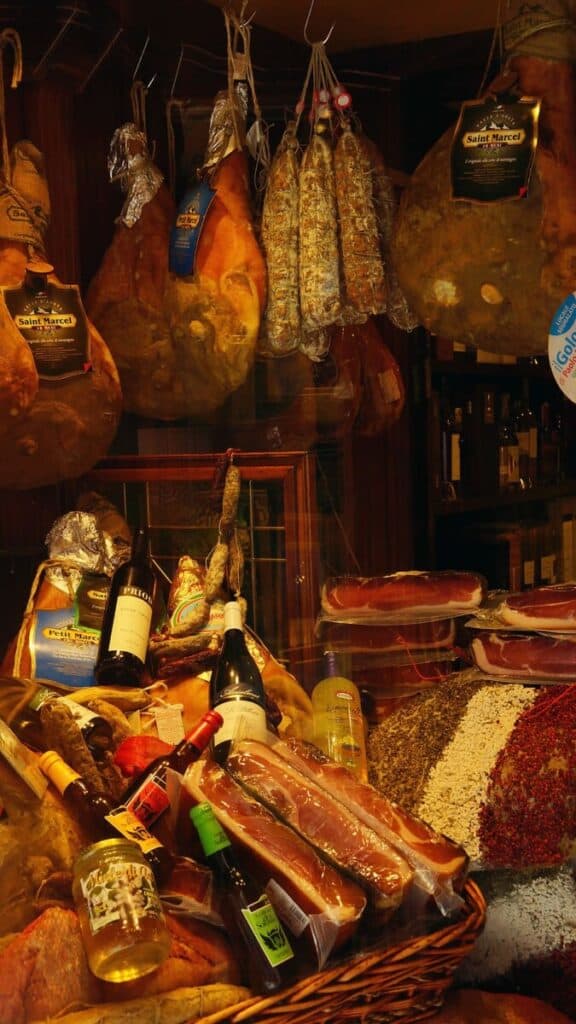
Or Leechcraft, which allows you to heal wounds. Rather than poultices and herbs, just straight-up describe it as faith healing. Liar’s Tell (aka Bullshit Detector) may be a divine gift where you always know when someone is lying around you. Or, Spot Frailty is the Goddess whispering in your ear telling you exactly where or how to strike down your foe.
This same rule applies, with some limitations addressed further below, to the use of Sorcery. Jumping up to the edge of the roof can be described as using your minor magical abilities. However, it is still an Athletics test.
Adjectives and Three Best Things in Life
Gumshoe games like players to add small tags or descriptors to help them characterize their Heroes. This lets them differentiate between their warrior and another player’s warrior. Other systems like 13th Age and the Cypher system, which I have not yet written about, do something similar.
The example given in the book is: Young, Fiery, Loyal, Never Forgives a Betrayal. These are traits that anyone observing your character for 30 minutes is likely going to pick up or learn about them. These traits can lead to positive and negative experiences.

The Three Best Things in Life are what drives your character. In the 1982 Conan the Barbarian movie starring Arnold Schwarzenegger, Conan’s answer is: To crush your enemies, see them driven before you, and to hear the lamentations of their women!
Like the Adjectives, these answers should inspire your choices as a player when you’re not sure what your character would do. Also, these answers and descriptors are not static. Over time and play, you can and should change them. Such changes reflect your character’s growth and response to success and loss.
Investigative Abilities
If this is your first time reading about the Gumshoe system, I have an entire article explaining it. In short, Investigative Abilities always work. If a scene has a core clue in it (information necessary for your characters to solve the mystery and/or to go to a new scene) and you have the right ability to obtain it, then you get it automatically.

You get these clues simply by having one rank in an Investigative Ability. But you can get additional ranks too. The advantage of having additional ranks is Spending that Ability’s Pool Points (1 rank = 1 pool point) to learn additional information. These are not Core Clues, but information that will help flesh out the investigation. Even if you spend our last pool point, your character will still be able to obtain Core Clues from scenes.
In must Gumshoe settings, Investigative Abilities are classified as Academic, Social, or Technical. In SotS, they are instead classified as Social or Professional, which each Profession having its own list. The number of Investigative Build Points each character receives is based upon the number of regular playersL
| No. of Players | Build Points |
| 1 | 14 |
| 2 | 13 |
| 3 | 12 |
| 4 | 11 |
| 5+ | 10 |
Note that SotS, unlike the other “standard” Gumshoe Games, includes rules for one-to-one play.
Now if you spend all of your Build Points on Social and Profession Abilities from your Profession, then you get 1 bonus build point you can spend on any Social or any of your Profession Abilities.

Here is the list of Social Investigative Abilities:
- Charm
- Command
- Intimidation
- Liar’s Tell
- Nobility
- Servility
- Taunt
- Trustworthy
The Sentinel’s Investigative Abilities are:
- Felonious Intent
- Laws & Traditions
- Spirit Sight
- Vigilance
The Sorcerer’s Investigative Abilities are:
- Corruption
- Forgotten Lore
- Leechcraft
- Prophecy
Here are the Thief’s Investigative Abilities.
- City’s Secrets
- Ridiculous Luck
- Scurrilous Rumors
- Skulduggery
And finally, the Warriors Investigative Abilities:
- Know Monstrosities
- Spot Frailty
- Tactics of Death
- Wilderness Survival
Allies and Enemies
Next, you get 3 Investigative Build Points that can only be spent on Allies (2) and Enemies (1). These are in addition to the Build Points already spent on the other abilities. You can spend your Allies points on the same or two different factions. You can even spend your Enemy point on an Ally faction. That just means there are elements within that faction that love and hate you.

These Alliances and Enemies are permanent for your character. As an Investigative Ability, using the Alliance allows you to get core clues because of your training in the Thieves Guilds or a bureaucrat in the Triskadane you once told you something important that you just now remember. The Enemy Ability can work in a similar way. You spend so much of your time thinking about your Enemy Faction that you can tell when their agents have been in a scene.
As mentioned above, these are different than the Favors and Grudges. Favors and Grudges are temporary points gained based upon actions taken during an adventure. They can be spent to make life easier or harder for a Hero, but once spent they are gone. They do not refresh (regenerate) like your permanent Allies and Enemies Ranks.
General Abilities
All characters get 30 points to assign to General Abilities. These are different than Investigative Abilities because they have a chance to fail. Whenever such a chance arises, the Game Master will call for a test of a General Ability.
The player rolls a single d6. They can spend however many Pool Points they have available in that General Ability. Each point spent adds a +1 to the die roll. Most tests have a Target Number of 3 or 4. This means spending 2 or 3 points usually guarantees success. But those points refresh slowly, if at all.
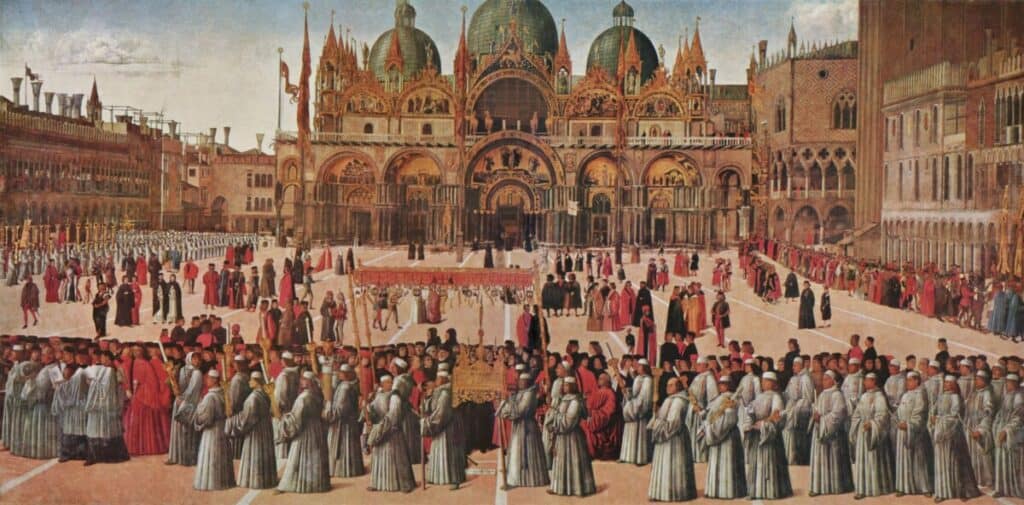
In prior Gumshoe games, going above the Target Number was meaningless. But as will be addressed further below, SotS has critical hit rules if your total roll exceeds the Target Number by 5.
I generally tell my players the Target Number before they roll, so they can judge for themselves how many points they want to spend. Unlike other systems, Gumshoe assumes all characters are hyper-competent. This would include having a good sense of how difficult a task is. Also, given how hard it is to refresh General Ability points, letting players waste them is a jerk move.
If you have 8 or more ranks in any General Ability, then you gain that Ability’s Talent. This is a little extra boost or maneuver you get to perform by having dedicated expertise. The General Abilities are:
| Name | Description | Talent |
| Athletics | Your ability to take physical Actions | Dodging Warfare Attacks |
| Bind Wounds | Spend 1 point to heal 2 Health of another person | Heal yourself 1 point for 2 Health |
| Burglary | Your ability to steal things | Picking pockets as a free action |
| Health | Your ability to withstand physical damage | Hit Threshold 4 |
| Morale | How long you stay in a conflict before surrendering | Hit Threshold 4 |
| Preparedness | Your ability to have what you need, when you need it | Set up Flashbacks |
| Sorcery | Using your Sorcerous Spheres to Attack | You may injure more than one target |
| Stealth | Moving unseen | You can appear and disappear wherever you want |
| Sway | Using fear or persuasion to attack Morale; also spend 1 point to heal 2 Moral of ally | You may injure more than one target |
| Warfare | Using a weapon to attack Health | You may injure more than one target |
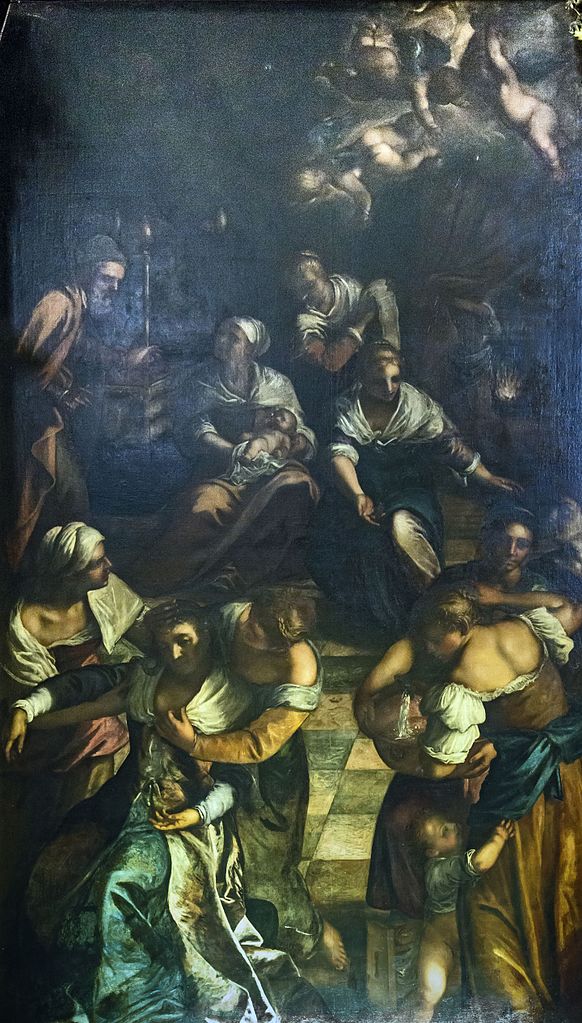
What is notable about this list of General Abilities is the “standard” Ability not present: Sense Trouble. In the Esoterrorists, Sense Trouble is rolled into Surveillance. But SotS follows the lead created by Time Watch: the Ability that lets you do something covertly is also the ability that lets you observe someone else’s covert actions.
It takes a thief to catch a thief. Or it takes a Stealth Test to catch someone sneaking up on you and a Burglary Test to see whether you were the target of a pick-pocket attempt.
Health and Morale
In addition to the 30 General Ability Build Points, you get 18 additional Build Points that you can only spend on Health or Morale. You must spend a minimum of 3 in each. This is another departure from prior Gumshoe games that let characters start with zero Health and zero Stability.
But to get the Health or Morale Talent, you must spend at least 10 points. This makes it harder for Health or Morale attacks to hit you. To get both to 10, you’ll have to spend 2 of your 30 General Build points.
As with all Gumshoe games, your Health or Morale track does not end at zero, it actually ends at -11. Once either gets below 0, then you must make a Health or Morale test to either stay conscious or inactive. Once your Health or Morale is at or below -1/-6 then you are Hurt or Seriously Wounded (Health) or you are either Unstable or Panicked (Morale). Each status imposes penalties on your character.
-11 Health is death. -11 Morale means you’re Broken. Being Broken means you’ve developed a significant quirk or mental illness that is permanent. It also makes you more susceptible to possession by ghosts.
Minor, Iconic Gear
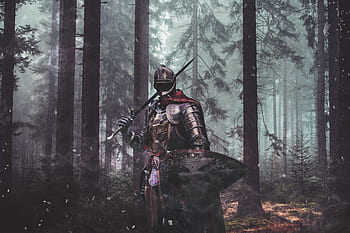
Generally, in Swords of the Serpentine, gear has little mechanical weight. At best, a weapon will give you a +3 to damage, but that is a large powerful one like a claymore or halberd. Armor may also give up to 3 points of damage reduction. Also, gear is less important to have listed out where the Preparedness Ability lets you just say you have something on a successful Test.
What is important is what your gear says about your character. Pick at least 5 items that are iconic or meaningful for your character. It could be a named weapon or a special shield. But these are the tokens, mementos, trophies that help define you.
in a sword & sorcery game, those come and go. We mean the small and personal trinkets that help define your life. The things in your pockets, around your neck, on your feet. The things that you hold dear and that would tell someone investigating your corpse what kind of a person you are. Feel free to name signature gear, particularly weapons. . . . You’ll know you’ve done a good enough job when a friend can look at your Gear list and be able to tell you what makes your Hero tick.
Swords of the Serpentine, Chapter Two
You can write down more than 5 such items. But so long as you have at least 5, then you get 1 point of Grit. Grit gives your character damage reduction to Morale attacks. Like your Adjectives, these can change over time and with play too. Gear you’ve found or purchased can be added to this list too. But if you write down too much stuff, it may increase the Target Number for Athletics Tests.
Combat
Combat in Swords of the Serpentine is a little more complex than in other Gumshoe games. While prior games had several different attack Abilities, they all had the same core mechanic:
- Decide how many points you’re spending
- Roll a d6
- Determine if you hit
- Roll a d6 for damage
- Add damage bonuses
- Reduce the target’s health
This is true for SotS too, but with rules for Critical Hits, two different damage pools (Health and Morale), Manuevers, and Sorcery shenanigans, there are more moving pieces for everyone to keep track of during combat. But first, we must address Refresh Tokens
Refresh Tokens
In Gumshoe, Refresh refers to regenerating your pool points. Each rank of an Ability grants you a point you can spend during play. Investigative Abilities rarely refresh during play. They, instead, completely refresh when you finish an adventure arc (which may take one or more Sessions).
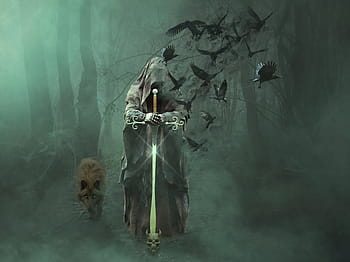
Then there are General Abilities. These points can refresh mid-adventure. In other Gumshoe settings, your characters typically have to rest, or take some action to pause and regroup. But in SotS they have introduced Refresh Tokens.
A single Refresh Token allows a player to refresh one pool point in a General Ability. When a Refresh Token is earned, it goes into a communal pot (they suggest literally point a token into a bowl) available to all players. But the Refresh Tokens go away at the end of a scene (use them or lose them). Refresh Tokens are earned as follows:
- Defeating Foes: Mooks are worth 1, Named Adversaries 3, Big Bads 5, Epic Foes 7.
- Solving Non-Combat Challenges
- GM Discretion: At the end of a scene, placing 2-3 for good, creative play, especially if players leaned into their drives and quirks.
- Off-Duty Time: Spending at least 8-hours doing character-appropriate activities such as sleeping, studying, carousing results in 5 Tokens, per Hero, added to the Bowl. This is not 5 per 8-hours. If the players take a week off, is still only 5 per Hero.
In Combat, these Tokens can be taken a used at any time. If a player really needs another 2 points for a +2, then they can grab two tokens. Tactically, this rewards focusing on getting rid of multiple Mooks early in a fight. This provides a bunch of tokens that can be used to take out the more powerful foes.
Initiative
Swords of the Serpentine uses a popcorn system. Each player and each adversary (use groups of mooks as one) can take one turn in a round. At the start of Combat, the Game Master decides who goes first under the circumstances.

Then whoever goes first decides who goes next. And so on, until everyone has had a chance to act. Then whoever is last in a round decides who goes first in the following round. I like this approach because it pushes narrative to the forefront of starting combat. It also adds chaos in combat, similar to Savage World’s Action Card initiative system (read more here).
Which isn’t to say all tactics are removed. If the players get the drop and it makes sense to let a player to go first, they have a choice to make. Do they all go in order before any adversary acts? They get to nova and try to wipe out as many enemies as possible.
But if they are the victim of bad rolls, then all of the enemies get to go at the end of the round. This mean, they can decide to go first at the start of the following round. If the Game Master wants to emphasize the tactical brilliance of this veteran team of mercenaries, then it’s a double nova back at the players.
Gear in Combat
There are two types of gear most relevant in combat: Weapons and Armor. Weapons have a range, a damage modifier, and maybe a property.
Weapons
For example, a simple club is range Point-Blank (more on range shortly), +0 Damage, and no property. But a Crossbow is Range Long, Damage +2, and has the properties: Obvious, Reload, and Armor Piercing 1. Weapons can have the following Properties:
- Armor Piercing: Ignores Armor’s Damage Reduction up to its ranks.
- Loud: Creates a significant amount of noise.
- Obvious: increases the difficulty of Stealth tests to conceal.
- Reload: An action is required to use the weapon again.
- Stun: Weapon invokes the Daze Maneuver, increasing its difficulty by its ranks.
Ranges
Taking a page from Pelgrane’s other Fantasy RPG: 13th Age, SotS uses range abstractions rather than tactical, gridded combat. The distance between any two people are denoted as follows:
- Point-Blank
- Close
- Medium
- Long
- Very Long
Moving between each range increment can be done as part of your action for your turn. But going between Long and Very Long may take two or more actions instead.
Point-Blank is where up-close and personal fighting happens: punching, grappling, shivving. Using ranged weapons, like bows, against targets increases your Health Threshold (the target number you must meet to hit a target) by 2. But if a foe at Close Range moves into Point-Blank against a foe holding a loaded ranged weapon, the person holding the ranged weapon gets a free attack with no penalty.
Close Range is approximately up to 10 meters away from each other. You have room to maneuver and attack with weapons like swords. This is about as far as you can throw irregular throwing weapons (like a mug).

Medium is being about 30 to 40 meters away. This is a fair distance, definitely requiring ranged weapons. This is the maximum you can throw items like a spear or rock, but the Health Threshold target number may be increased by 2.
Long is around 100 meters (the length of an American Football field (pitch)). This is close to the limit of longbows and crossbows. Health Threshold target numbers can be increased beyond this range.
Very Long Range is 500 meters. This is out of range of everything, unless you are using a very specialized weapon.
Armor (and Grit)
Protective items like Armor gives you damage resistances. They can also increase your difficulty for performing Athletic Tests for swimming only. There is a sidebar explaining the Developers found situational athletic penalties too finicky at the table. For example, Chainmail gives 2 armor and increases Athletic Tests by 2 if you’re swimming.
Shields can give Armor, up to +3, but it also increases your difficulty to hit your opponents. In other words, for each point you hide behind your shield, your target’s Health Threshold increases by the same amount.
The other way in which shields help is if you have the Dodge Talent by taking 8 ranks in Athletics. If you have a shield or buckler equipped, you only have to meet your opponent’s roll, instead of exceeding it, to Dodge the attack.
Remember, if you have described on your sheet at least 5 pieces of iconic gear, then you get 1 rank in Grit. Grit is armor against Morale Attacks.
Attacking
There are three General Abilities to attack and damage your foes in combat:
- Sway
- Sorcery
- Warfare
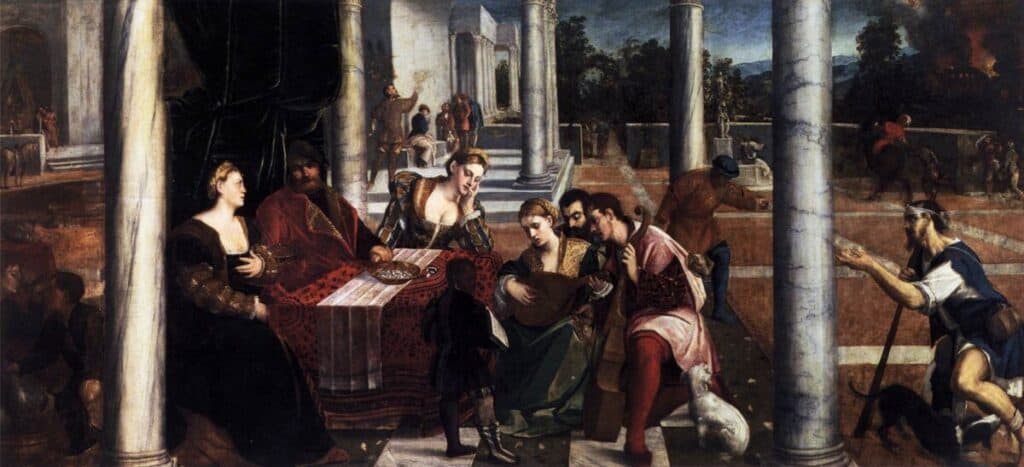
Sway Attacks
Sway attacks the morale of your adversaries. You are using words to undercut their will to fight. Sway attacks can be done at Point Blank to Medium range. But a Medium, the 30-40 meters distance may make it harder for your enemies to hear you or care about you, increasing the Morale Threshold by 2. If you hit, Sway always does 1d6+1 Morale damage.

Sorcery Attacks
Sorcery attacks go reach up to Long Range, but their Thresholds also increase by 2 at Long Range. You cannot attack with Sorcery unless you have at least 1 rank in Corruption. Without Corruption, your Sorcery is weak. With each rank of Corruption, you pick a Sorcerous Sphere (more on that later), and whether your spells attack Health or Morale. If you hit, then you do 1d6+1 Health or Morale damage.
Warfare
The range and damage modifiers for weapon attacks vary depending on your weapon. But these always target Health, unless you’re performing a Daze Maneuver. The damage is a 1d6 plus your weapon’s damage modifier.
Minimum Damage
Another addition to Swords of the Serpentine that I’ve not yet seen implemented in other Gumshoe settings is minimum damage rules. Your minimum damage is always the number of points spent on your attack roll, assuming you hit, plus your damage bonus. If you spent 3 Sorcery Points to ensure you hit, then your minimum damage is 4 (3+1). If you’re attacking with a Crossbow and spent 3 Warfare Points, your minimum damage is 5 (3+2) because Crossbows have +2 damage.
Extra Damage
There are several ways characters can do extra damage when they hit. The first is a Critical Hit, which is anytime your total hit roll exceeds the Health or Morale Threshold by 5. When you get a Critical Hit, you roll an extra d6 damage. Your minimum damage rules do not apply to extra damage dice.
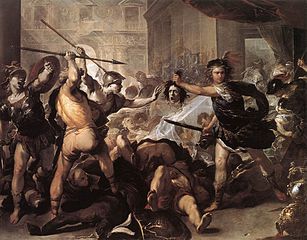
If you have the Talent (by buying 8 ranks) in Warfare, Sway, or Sorcery you can have your attacks damage multiple targets. This occurs if you exceed the original target’s Threshold by 3 or more. For every additional 3 points, you can add an additional foe.
If the target’s Morale Threshold is 3, you spend 6 Sway points, then roll a 3, you can add two additional targets. Those additional targets take 1d6+1 damage, with no other modifiers allowed. Please note, that you must either choose to Critically Hit or damage additional foes, you cannot do both.
The third way you can cause extra damage is by spending an Investigative Ability Pool Point to gain an additional d6. You’ll need to explain how that Ability leads to more Health or Morale Damage. You can also spend that Pool Point after hitting, but before you roll your regular damage. This d6 is not subject to the Minimum Damage rule.
The final way to boost damage is Teamwork attacks. Let’s say you’re fighting a creature that has high Armor and your primary attack is Warfare or your Sorcery only damages Health. Even if you hit, the damage is greatly reduced. Or maybe you’re out of range.
You can, instead, target an ally that is in range who will benefit from your help. In the above example, it is an ally who uses Sway as their method of attack. Describe how you’re helping that ally in a way your Game Master will accept. Roll your Warfare attack against the Adversary’s Health Threshold.
On a success, your Ally gets an extra 1d6 damage (with no other modifiers). If you Critically Hit or Spend an Investigative Ability, then you can hand those bonus die to your Ally. Your Ally must hit target before the end of their next turn or all of those bonus die are discarded.
Maneuvers
Maneuvers are attempts to do impose a condition or non-damage dealing effect on an adversary. For example, you hold a weapon to the chest of a bandit, demanding they surrender. You cast a spell that commands that your foe flee. You try to disorient a foe by screaming at them, so they have a -2 to their Tests on their next turn.
Like your attacks, you roll your Sway, Sorcery, or Warfare against their Health or Morale Threshold. If you hit, you still roll your damage dice (including any Critical Hits or Investigative Spend dice). The Minimum Damage Rule applies to your primary dice roll.
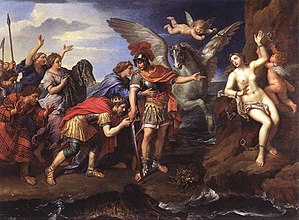
Your opponent then has a choice to make: do they accept the maneuver or do they take the damage? In the surrender example above, let’s say the damage roll was 4. If that Adversary surrenders, then they throw down their weapon and raise their hands. If they do not surrender, then you’ve stabbed them with your sword, doing 4 damage (assuming no Armor).
The example Maneuvers given are:
- Blind
- Daze
- Disarm
- Unseat or Dismount
- Drag or Restrain
- Persuade
- Strangle
- Trick
- Trip or Knock Back
The book is clear these are merely examples, not an exhaustive list. When we get to Sorcery, you’ll see a similar mechanic for spells that do not just damage adversaries. This is a good spot to cover the rules regarding the various Hazards in Swords of the Serpentine, because these can go hand-in-hand for creative maneuvers, especially with Sorcery Attacks.
| Hazard | Effect |
| Blindness | Partial blindness may only affect ranged attacks. Partial or permanent full blindness will increase Test Difficulties depending on how necessary sight is to accomplish the task. |
| Diseases | There is an entire sub-system of diseases, their stages, and how to use Leechcraft to cure them. They also list several different types (e.g. Throat Leeches) |
| Drowning/Suffociation | Each round you must roll a Health Test. A failure means you are Dazed, a second one means you’re Unconscious. You then lose 1 health each round you can’t breathe |
| Falling | You take 5 health damage per 3 meters, with a successful Athletics Test to reduce it by 5. There may be situational bonuses or penalties. |
| Fire | The amount of damage you take depends upon how much fire you’re exposed to. |
| Extreme Heat/Cold | You suffer as if you have the Hurt condition. The Game Master may also impose health loss too. Wilderness Survival or Preparedness may help mitigate. |
| Poison/Venoms | Like Disease, Poisons have their own sub-system of effects. |
Sorcery & Corruption
Evoking its Sword & Sorcery source material, the use of true magic is an act of perversion. It breaks cause-and-effect, tearing at reality, and your soul. This is why you cannot attack with Sorcery unless you take at least one Rank in Corruption. For each Rank, you can choose a Sorcerous Sphere that flavors your magic. There are a lot of suggested spheres, which include:
| Aging | Air | Blaides |
| Curses | Decay | Disease |
| Fire | Ghosts | Illusion |
| Love | Memory | Necromancy |
| Possession | Serpents | Transportation |
| Trickery | Water | Worship |
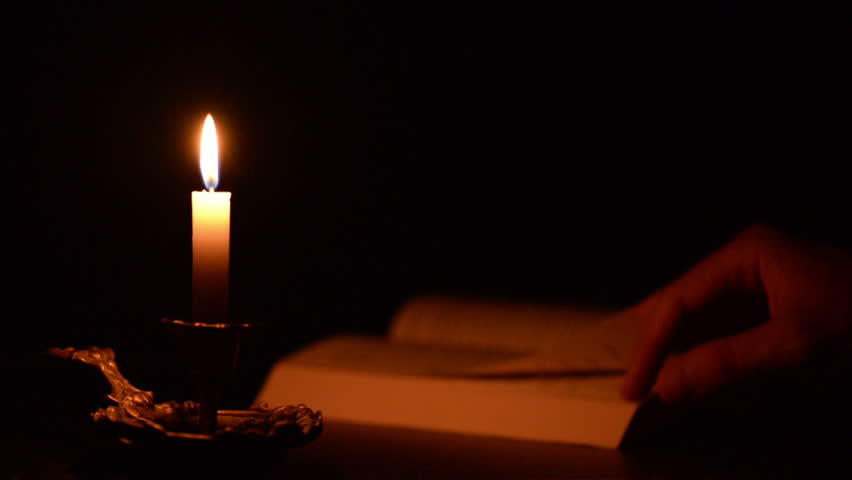
But before you pick your Sphere, you must decide if you’re attacking your enemies bodies (Health) or Soul (Morale)? Then you must decide how you learned sorcery: Ancient, forbidden texts? Or have you accepted the possession of a demon, small god, or spirit?
As a Sorcerer, you can flavor minor magical effects ala Fantasia. But that is just flavor. The power comes from when you spend Corruption Pool Points to fuel your Sorcery. Despite being an Investigative Ability, Corruption spends to find a clue may be anticlimactic compared to what happens if you spend it in combat. With a Corruption Spend you add +3 to your Sorcery attack roll and you can:
- Trigger exceptional damage
- Trigger area of effect damage
- Create unique spells
- Create special Maneuvers
- Level a Curse
- Create Sorcerous Glyphs and Traps.
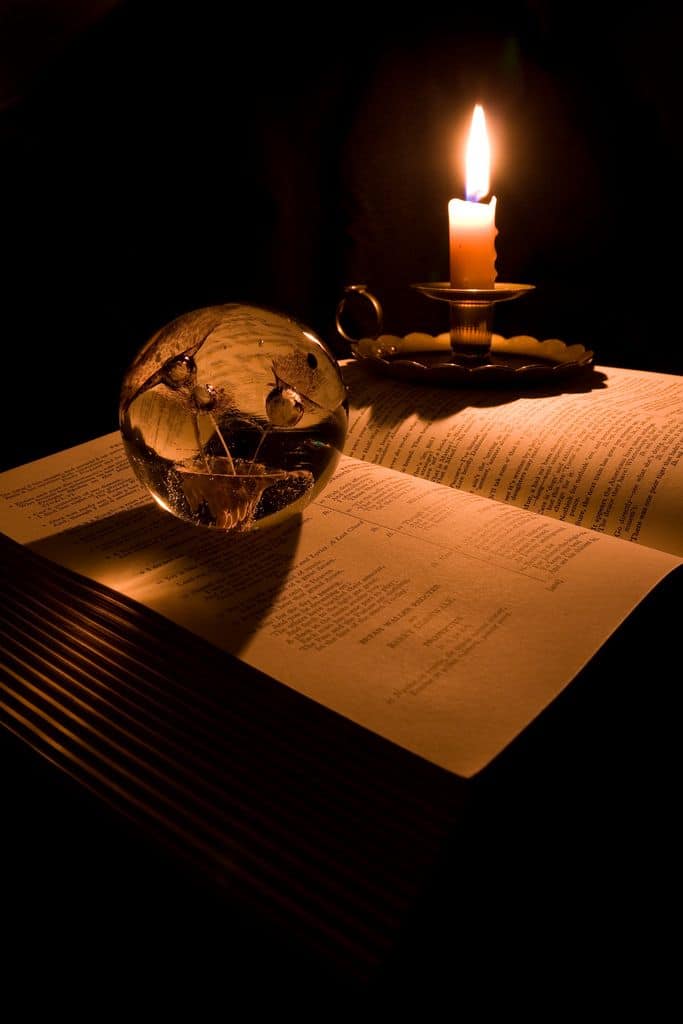
For exceptional damage, in addition to the standard 1d6+1 Sorcery Damage, for each point of Sorcery Spent, the damage increases as follows:
- 1d6+3
- 2d6+3
- 3d6+3
- 4d6+3
- 5d6+3
If instead, you want to do area of effect damage, you have to decide how big of an area you want to effect: Enemies within Point Blank, Close, Medium, or Long Range of the target. The wider the range, the higher the minimum amount of Corruption spent and the less overall damage.
At Point-Blank Range, a 1 point Spend only causes 3 damage to all enemies. At 2 points, it goes to 1d6+3. It then follows the same pattern as Exceptional Damage. As the Range widens, you have to spend one more point to have the 3 damage minimum.
The unique spells are just that: unique. Players will need to talk through with their Game Master what they want to do, the mechanical effects, and the appropriate amount of Corruption to spend to achieve it. Curses and Glyphs are considered an Advanced Rule, which I won’t cover here.
Corruption Effects
Corruption does not just cause damage to your foes, it distorts everything around you. When you Spend Corruption, you have to decide whether the effects of that Corruption are Internalized or Externalized.

Internalized Corruption
When you hold the Corruption inside of you, it changes you. First you must make a Health Test, whose difficulty is 3 + 1 per Point of Corruption spent. If you Succeed, then you must write down on your sheet one small thing that has changed on your body:
- A new wart
- A small patch of scales
- A vein on your hand turns black
These have no mechanical effect, but they are permanent. At first they may not be noticeable to others, but over time you are obviously changed by your Sorcery.
If you Fail the Health Test, then the change is larger and noticeable to anyone observing you in the moment. Again, this does not have any specific mechanical effect, but it makes your Sorcerer’s visage and presence unnerving.
Externalized Corruption
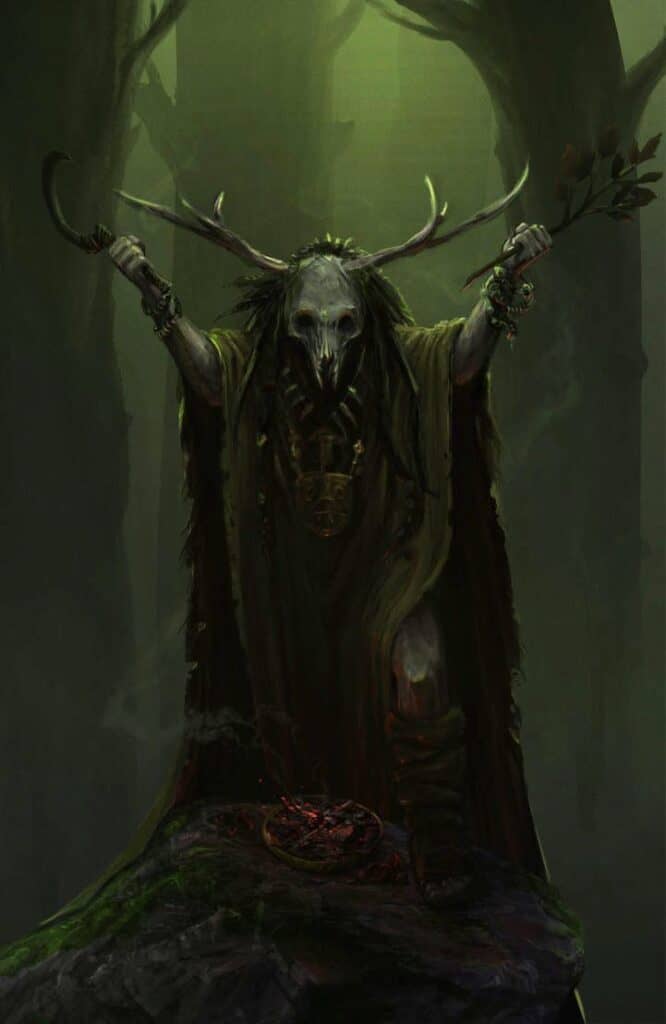
If you decide to Externalize your Corruption, it effects your environment and your Allies. All Allies within Medium Range of you must make a Morale Test, difficulty 3 + 1 per Point of Corruption Spent. A success has no effect. A fail means they lose 4 Morale.
Then there is the effect on your environment. The Corruption lingers in the area. Those with Spirit Sight can see it and possibly heal it. But each Sorcerer’s Corruption has a signature. This allows Inquisitors see and track Sorcerers.
The level of Corruption in an area is measured in Stages. The more Corruption Spent, the higher the stage. The higher the Stage, the worse the area’s effects. Each higher stage includes the lower stage’s effects:
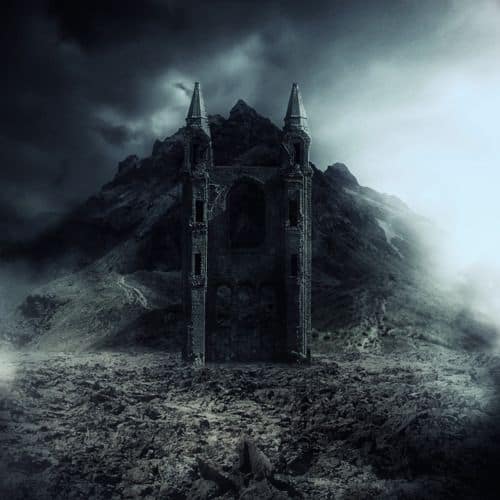
- Denari’s Blessing is suppressed, cows in the area give sour milk. It takes a month for the Corruption to dissipate on its own.
- No one wants to linger in the area and if they do for an hour, they suffer a 1 point of Morale loss. It can take up to a decade for the Corruption to reduce.
- Building foundations are weakened, sinking more quickly or falling down entirely. Those passing through experience significant fear, immediately losing 2 Morale (4 at night). Ghosts can easily pass through from the Spirit Realm. It takes a generation to reduce.
- Entering the area causes an immediate 4 Morale Damage. Those living nearby become paranoid or homicidal. The area is a beacon to Evil. It takes a Century to heal.
- Entering the area immediately subjects you to a Possession Maneuver: either become possessed by a Ghost or take 6 Morale damage. This level of damage never heals.
- A rift in reality is created that slowly spreads unless sealed.
These are effects that can be created a Player Character by doing a big Corruption Spend!
Final Thoughts
I’ve covered about 2/3rds of the rules and subsystems presented in Swords of the Serpentine. While SotS is less finicky in its Rules than systems like Pathfinder or 5th Edition Dungeons & Dragons, it has more of these fiddly bits then other Gumshoe Games.
I’ve not read deeply in the underlying Swords & Sorcery fiction (primarily the Moorcock oeuvre), so I may not be as in love with the fiction this book is trying to evoke. But amongst the things I like about Gumshoe games are the relatively simple rulesets.
The lighter rules approach allows the Game Master and Players focus on play and the story. This Setting has a lot of moving parts. The good news, is many of those parts are not core or necessary to running this Game.
I personally love fantasy stories and roleplaying. Having this setting and ruleset allows me run a Fantasy Gumshoe experience. Also, the Game Mastering Advice and tips on how to construct your own Mystery/Adventure is top notch. Their advice should be used in any Gumshoe game you run. Even if you’re not interested in the setting per se, the GM Advice section is worth the purchase price.
If you want some links on where to buy Gumshoe books, it can be found over here.
If you want to explore the wilder (and wider) world of tabletop roleplaying games go there! If you want to start to learn on how to paint miniatures, click already! Or maybe you want to read more of my posts about Dungeons and Dragons, then click away here!

